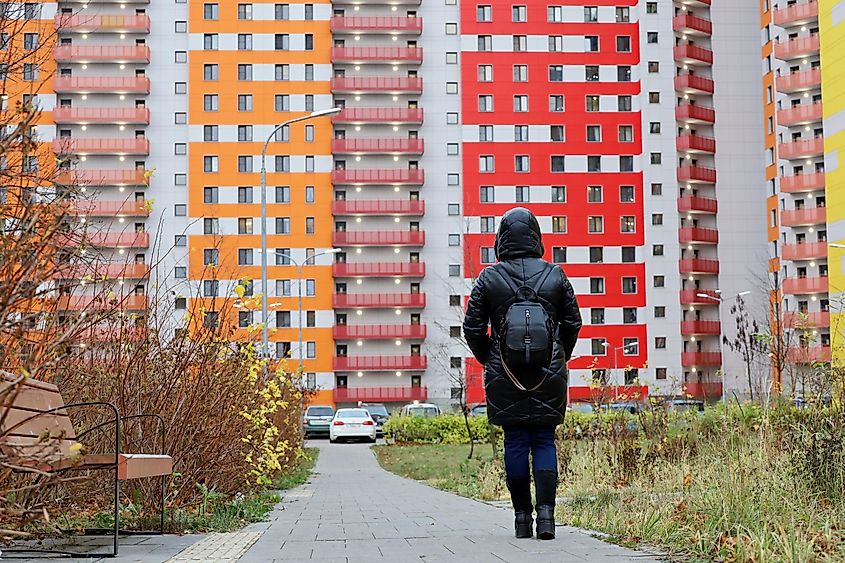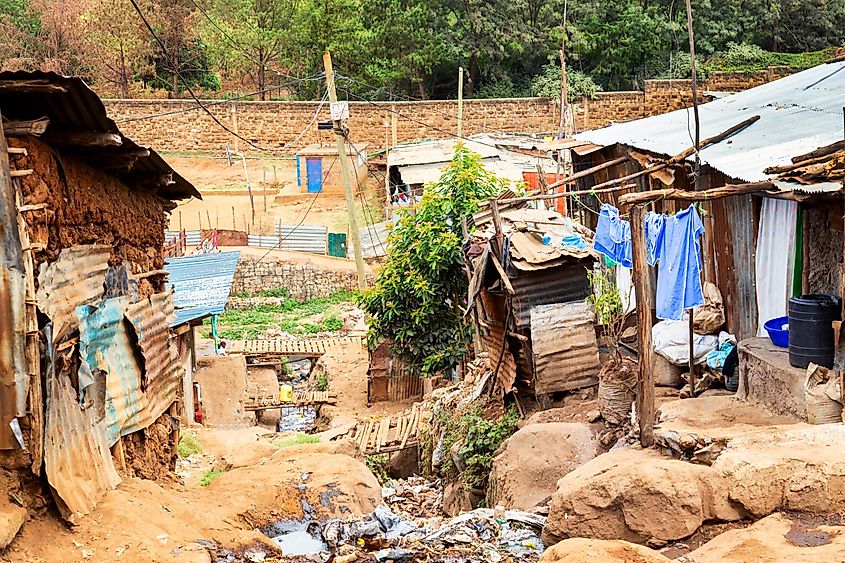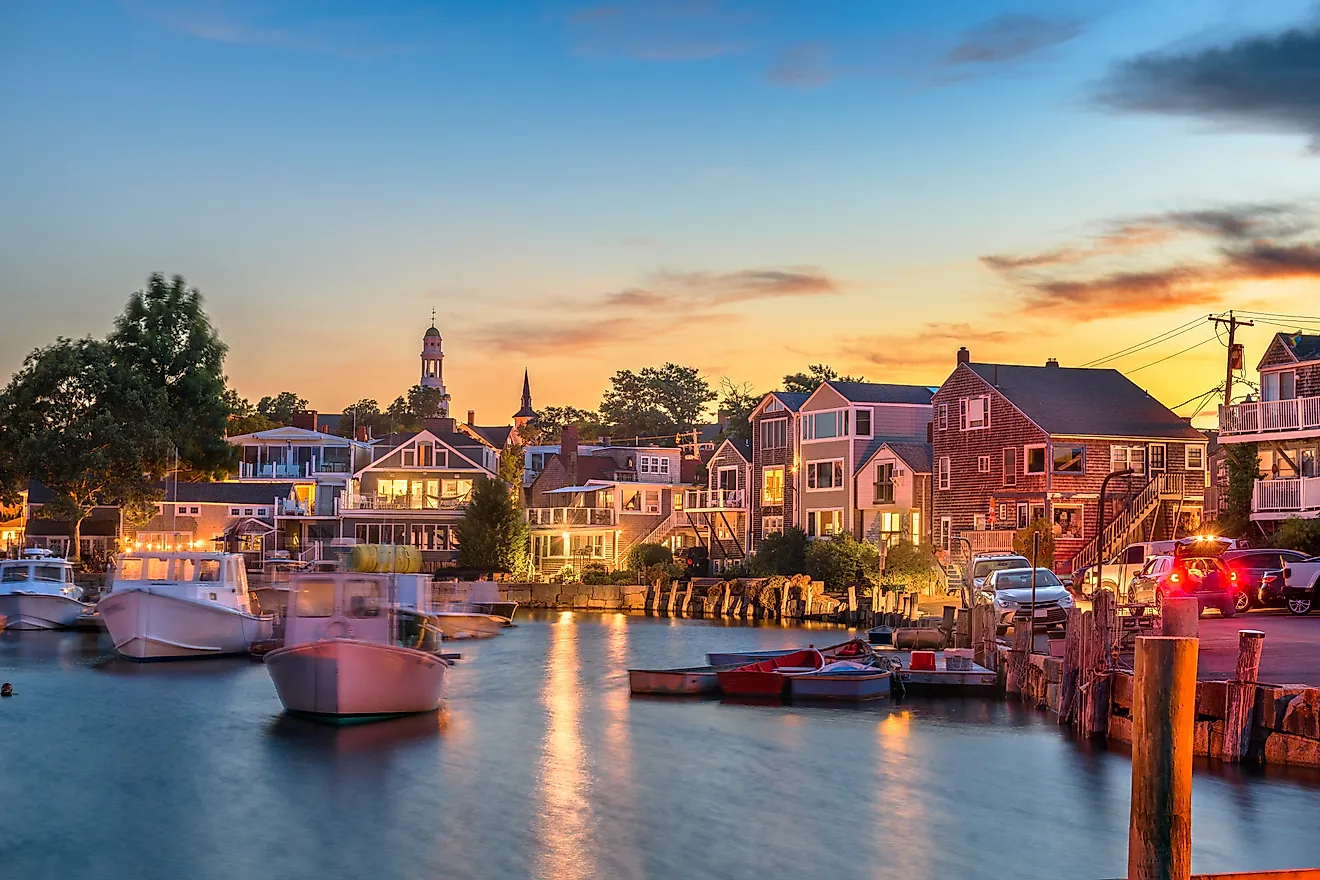
10 Loneliest Nations in the World
Over time the size of individual households has decreased as social trends continue to evolve. While large families were once a widespread practice across many cultures, today, more and more people are choosing to live alone and delaying starting a family. The reasons are numerous and include the cost of living, changing attitudes, and an aging population, but for whatever motive, the presence of single-person homes has become more prevalent. This article looks at the 10 "Loneliest" Nations in the World based on the percentage of population living alone.
1. Sweden - 47%

Though it has a population of just 10.4 million, nearly 47% of Sweden's populace live alone, the highest of any nation. Widely known for its robust welfare system, housing is largely very affordable in the country, and single-occupancy apartments are very popular. To counter the effects of too many single homes, the Swedish government has sponsored several collective housing complexes to have more people live together. But with a stable economy, changing social trends towards the nuclear family, and an aging population, Sweden's share of single homes may indeed only continue to increase.
2. The United Kingdom - 34%

Including the nations of England, Scotland, Wales, and Northern Ireland, 34% of the United Kingdom's 67.7 million inhabitants live alone. With a stable welfare system, many in Britain can afford to live in single-person dwellings and are indeed choosing to do so. In conjunction with global trends towards delaying marriage and family life, this means more and more Britons live alone. In addition, high housing costs and inflation make single-person homes more desirable for many, while continued economic questions surrounding Brexit have impacted consumers' choices.
3. Japan - 31%

Japan is the 11th most populous nation in the world, with some 124.2 million inhabitants, 31% of which report living in single-person homes. With an aging population and a low birth rate, the number of people living alone in the country has been steadily increasing for decades. The elderly population alone has significantly contributed to Japan's status as a "lonely" nation, with an increase of nearly half a million seniors between 1980 and 2010, according to census figures. Officials have undertaken efforts to increase births and promote larger family circles, all with the aim of ensuring fewer Japanese households are left with solitary residents.
4. Italy - 29%

Around 29% of Italians live alone, according to statistics data, with various reasons leading to the trend. In a country of nearly 58.8 million people, the aging population has been a significant factor in the decline of multiperson homes. Though the traditional family still maintains a strong presence in Italy, an increasing shift to independent living coupled with an affordable housing market has made single dwellings more prominent. In addition, more financially prosperous urban centers (particularly in the North) attract young workers, while more rural communities maintain large family homes.
5. The United States - 28%

The world's third most populous nation, the United States, is the home of 331.8 million, 28% of which are reported to live alone. Like Canada, many people in America choose to live alone rather than being absolutely forced to. In many major cities, the trend of independent living has soared in the last three decades, while the influence of the traditional nuclear family has waned. Though economic conditions vary across the country, access to higher education, higher-paying jobs, and more affordable housing has made the desire to live single more attainable. In addition, social trends have continued to evolve, and the value placed on starting families and getting married younger has shifted to later in life.
6. Canada - 27%

According to various data sources, 27% of Canada's population of 38.9 million live alone, ranking it as the sixth "loneliest." With a stable national economy, good financial security, and diverse workplace opportunities, more Canadians can now afford to live independently. Unlike other nations on this list where multiperson homes may be out of reach, many Canadians are choosing to live alone and putting less emphasis on the traditional family structure. And in larger cities in provinces like Quebec, Ontario, and British Columbia, a growth of single-person households has been recorded where higher-paying jobs also aid in achieving independence.
7. Russia - 25%

The world's largest country is sparsely populated, with only about 147 million inhabitants, 25% of which live alone. As with many nations worldwide, many young adults no longer place marriage as a high priority, instead choosing to focus more on careers. This has led to an increased number of single-person households, and major cities like Moscow and St. Petersburg report the highest amount of single people. And with a stagnating Russian economy (which has further been targeted following the 2022 invasion of Ukraine), decreasing exports, and high inflation, the ability to afford a large family has become more strained.
8. South Africa - 24%

Around 24% of South Africa's population of 60.6 million inhabitants live alone, according to various studies. Data shows that fewer individuals are getting married, while a stable housing market has led to more affordability for single-resident homes. In addition, an increase in single-parent households has been recorded over the last two decades. Still, unemployment rates remain relatively high, public debt continues to grow, and economic growth has been slow in the country, meaning that the viability of multiperson households remains untenable for many.
9. Kenya - 15%

One of only two African nations on the list of 10 loneliest nations, Kenya has a population of nearly 56 million, with some 15% living in single-person homes. With an aging populace and poor economic conditions, an increasing number of Kenyans now live alone without the support of family or friends. And with a stagnating birth rate, multiperson households have seen a noticeable decline. If increased political stability and economic growth manifest themselves, the number of single homes may be reduced.
10. Brazil - 10%

According to studies, South America's largest nation, Brazil, is also the tenth loneliest. Up to 10% of its population is reported to live alone, as more young people focus on financial stability before starting a family. As the growing workforce focuses more on establishing firm careers, the number of single-person households has only increased. In addition to Brazil's COVID recovery, a decreasing GDP, and rising public debt, the trend of single people has only grown. It could remain a stable presence in Brazilian society for years to come.
The prevalence of the traditional nuclear family has diminished in many societies worldwide, leading to more and more nations with increased single-person homes. Indeed the ten countries on this list from each of the continents reflect the trend of people living alone and for more extended periods. From economic benefits to societal attitudes and changing demographic ages, more of the world's population is now living single and alone.











